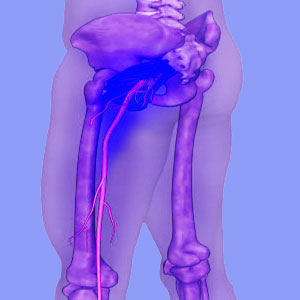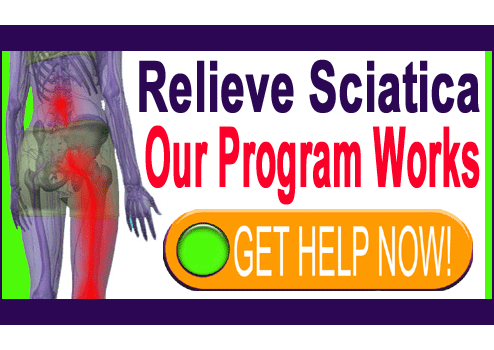
Have you considered using a laser for sciatica treatment? Low level laser therapy is more popular than ever, but why? Does laser therapy provide a real possibility for a cure? Is the relief provided so effectual that it is deemed superior to other noninvasive methods of care? Are there other reasons that might explain its sudden surge in popularity, possibly from the care provider’s point of view? These are all crucial questions to think about before acting on any whim to undergo cold laser treatment for sciatica pain.
What exactly constitutes laser therapy? Will it hurt? Is laser therapy some form of surgery? Will my insurance cover the cost and what should I expect from treatment? These questions are just as vital and patients who are evaluating cold laser treatment must know the answers to these queries before making their final decision as to whether or not the therapy is optimally suited for their needs.
This dialog explores the facts of laser for sciatica symptoms. We will define the treatment and discuss its benefits and limitations. We will also provide a hint as to why the treatment has grown exponentially in application over the past few years.
Laser for Sciatica Facts
Low level laser therapy, also called cold laser therapy, is a rather ambiguous treatment that is currently being utilized to treat an astounding range of conditions, including virtually all varieties of pain. Much like other complementary healing treatments, like massage, chiropractic and acupuncture, its uses are not clearly defined or even logical from a traditional medical perspective. This explains why the vast majority of cold laser providers are chiropractors and non-medical health clinics, but not physicians.
Cold laser is noninvasive and nonsurgical. It should not cause any pain when being performed, although some patients do experience mild to moderate post-treatment discomfort. The laser device is used to deliver light energy through the skin and deeply into the painful anatomical tissues. Depth of penetration depends on the type of device being utilized, the settings in use at the time of treatment and the location of the body being treated.
Laser therapy embraces the idea of causing disturbances in the body to elicit an increased organic healing response. This concept is best known in prolotherapy and the idea behind cold laser is similar: Cause some reaction in the anatomy and hope that its response will be favorable in terms of promoting organic healing and improved metabolism.
Laser Treatment Benefits and Limitations for Sciatica
Low level laser for sciatica is popular with patients, who generally report good results from the practice. Let’s look at some major benefits of laser treatments:
There is little risk to consider using cold lasers. The worst consequences are usually mild soreness in the treated area for a coupe of days post-therapy.
The therapy is nonsurgical and nonpharmaceutical, sparing patients the worst of the dangers of some forms of sciatica treatment.
The treatment can be rendered as needed, with patients being able to seek pain relief whenever they need it most. Treatment is fast, easy and can easily be performed during the workday for busy patients.
Therapeutic statistics are positive, with the majority of patients citing satisfying results, although few reporting permanent cures. In fact, the treatment is very closely related in satisfaction to general chiropractic treatment in terms of duration of relief and efficacy.
Let’s also cover some of the major downsides to cold laser treatment for sciatica:
Cold laser is controversial in its objectively proven benefits. There remains much discussion as to whether the treatment provides any scientific efficacy at all.
Insurance coverage for cold laser is limited under many healthcare policies. Some patients must pay fully out of pocket for care.
Duration of benefits might be short-lived. Many patients report extremely transient relief lasting only a few days or less.
The chances of realizing a lasting cure using laser treatment are slim or none. Only anecdotal evidence exists linking laser treatment to true and enduring sciatica cures.
Propagation of Lasers for Sciatica
We have no problems with the application of laser therapy, as long as patients understand the pros and cons of the therapy and make informed decisions. After all, if lasers work, then it really is not crucial to understand exactly why, as long as they do not do more harm than good. Risks are few and complications are far between in the general patient population. If the treatment can be afforded and is desired, then we endorse it for all patients who want to seek out an alternative to traditional methods of pain management.
We would like to provide one definitive answer on the growth of this therapy in the modern pain industry: medical marketing. The companies that produce medical lasers make tremendous amounts of money from their manufacture. They can afford to produce high quality marketing materials that are easily branded by individual care providers as part of a promotional campaign. These same care providers can afford laser apparatus, as they are less expensive than many other treatment devices, such as spinal decompression machines. In turn, the care provider makes a tremendous amount of money from the cold laser and can easily integrate the therapy into their practice for virtually every patient and every condition treated. It is a therapy that is a pure money-maker. Low level laser is a financial windfall for so many, helping to explain its surge in popularity far more than actual patient demand. Healthcare consumers should take this information for what it is worth and do lots of research on any given laser practice before paying too much.





